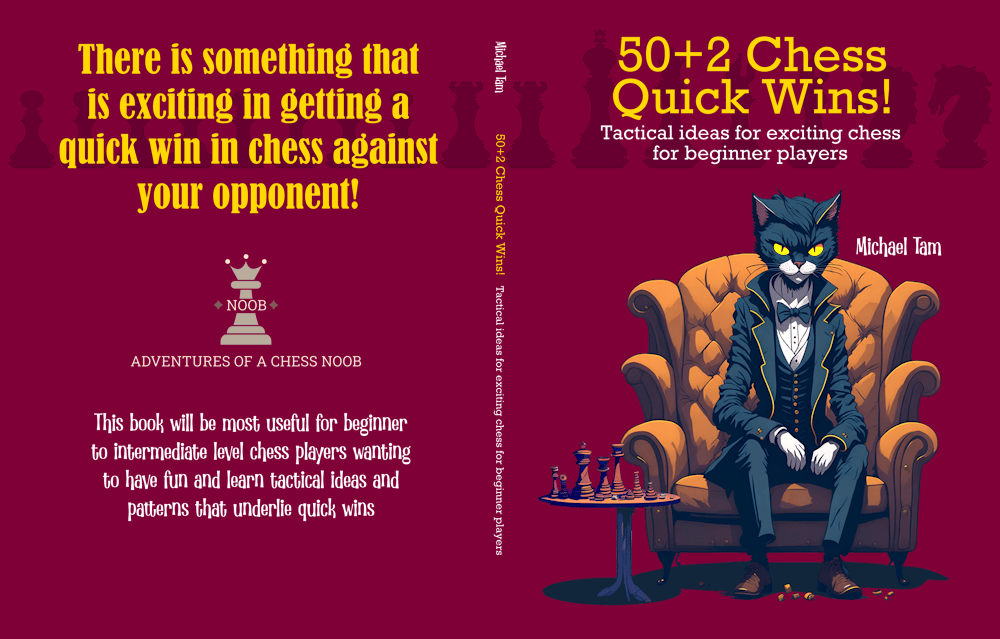
Fried Liver COUNTER-Attack | SWASHBUCKLING chess tactics! 🏴☠️🤩👍
#friedliver #counterattack #tactics
When playing with the black pieces, one of the feared openings to play against at the beginner-intermediate level is the Fried Liver Attack in the Italian Game. The flip side is that it is one of the favourite lines for White! The Lichess community database demonstrates the seeming unreasonable effectiveness of the Fried Liver – at the critical move (5… Nxd5), White has a massive win ratio advantage of 62% vs Black (35%)!
Indeed, many a player will eschew the Two Knights Defense against the Italian Game to avoid facing the Fried Liver, despite the Two Knights Defense being one of the best and most solid approaches to the Italian! Earlier in my chess journey, I was one of these beginner players. Against the Italian, I voluntarily entered the Giuoco Piano lines rather than play the Two Knights, despite disliking the slow positional lines of the Quiet Game. Since then, I’ve learnt a variety of ways of dealing with the Fried Liver and now, actively enjoy playing against an opponent who attempts it! 🤩
In this game, I accidentally played into and allowed the Fried Liver Attack line, and so, it’s a good game to think about a potential tactical approach! The start of the Fried Liver is with White’s assertive Knight Attack on move 4 when faced with the Two Knights Defense (1. e4 e5 2. Nf3 Nc6 3. Bc4 Nf6 4. Ng5).
![]()
Historical note:
The Fried Liver Attack with the brilliant knight sacrifice on f7 (1. e4 e5 2. Nf3 Nc6 3. Bc4 Nf6 4. Ng5 d5 5. exd5 Nxd5 6. Nxf7!!) is one of the oldest opening attacks/traps documented in chess history. The first recorded game in the massive LumbrasGigabase is from the early 17th century, over four hundred years ago! It was played by Italian chess master Giulio Cesare Polerio (c.1550-c.1610) from the then Kingdom of Naples (Polerio — Domenico, 1610, Rome).
![]()
Polerio was a contemporary of Ruy López and may have defeated him in chess during his travels with fellow Italian, Giovanni Leonardo di Bona to Spain. During that trip, di Bona won what is considered to have been the first known international master tournament in chess in Madrid in 1575!

![]()
Polerio’s manuscripts record many opening variations of his era, including the Two Knights Defense, Scotch Gambit, Center Game, and variations of the King’s Gambit.
One of the potential issues with the Fried Liver Attack, beginning with its attempt starting with the Knight Attack on move 4, is that White’s position is conceptually unbalanced. The focus on the early attack means that White has little organised defence. Tactically, this means that White is susceptible to an immediate counterattack by Black. A romantic, swashbuckling approach against the Fried Liver Attack can be very effective. Indeed, the named counterattacks by Black all represent win ratio reversals – giving large advantages for Black!
- Ponziani-Steinitz Gambit (4… Nxe4!?): White (46%) vs Black (52%)
- Traxler Counterattack (4… Bc5!?): White (41%) vs Black (57%)
- Fritz Variation (4… d5 5. exd5 Nd4): White (40%) vs Black (58%)
![]()
Historically, I’ve tended to play the Ponziani-Steinitz Gambit against the Knight Attack, but more recently, I’ve gravitated towards the Two Knights Defense, Fritz Variation.
So, I played (4… d5) and as expected of a Fried Liver Attack player, they responded (5. exd5). Interestingly, the most accurate response in this position, now proven with modern computer analysis, is (5… Na5), the Polerio Defense – yes, the same Giulio Cesare Polerio who described and recommended this response! The Fritz Variation, what I was intending, is to then play the surprising (5… Nd4). However, in a moment of distraction (I was talking to someone) and with a knight move in mind, I unthinkingly played the wrong knight (5… Nxd5?), and thus allowed (6. Nxf7!!) the formal move that technically defines the Fried Liver Attack! 😱
From the perspective of accuracy, the “best” move is to accept the sacrificed knight with (6… Kxf7) and deal with the fact that White now has a massive initiative with (7. Qf3+), winning tempo and bringing their queen into the attack! This is often overwhelming at the beginner-intermediate level. However, that’s no fun! 😏
Instead, I decided to use some of the attacking tactics, especially from the Ponziani-Steinitz Gambit to gambit material loss to counterattack, and thus, capture the initiative away from White! So, I play the tricky move (6… Qh4!?), technically a mistake at [+4]! With this move, I hang 8 points of material, both my d5-knight and h8-rook, while forgoing winning back 3 points of material in the form of White’s f7-knight!
Undoubtedly, White must have thought that I’d gone mad and happily captured the knight (7. Bxd5), but this was the step of tempo I needed to bring another attacking piece (7… Bc5), and now threatened a scholar’s mate with queen and bishop!
White’s best move is to soberly short castle, but this isn’t the easiest move to make as it looks like castling into a kingside attack. In the position, White will likely have Qf3 in mind already, as it would have been the “standard” move after the normal progression after the Fried Liver Attack, and this was what I was banking on! They played the move, but just like in the Ponziani-Steinitz Gambit, we now have the powerful (8… Nd4!), a fork of White’s queen on f3, but also their c2-pawn which would come with an absolute check of White’s king and rook! In three moves, I’ve brought three attackers against White’s king and winning tempo!
White’s best move is to invite/force a trade of queens (9. Qg3), but loss aversion is a powerful bias. Having tasted material advantage, it can be difficult to give it up by allowing Nxc2+ absolute check! White plays a very reasonable looking move (8. Qe4) – the move invites a queen trade, defends c2, and threatens Qxe5+! It looks like a great move!
But here’s the thing… The queen’s defence of c2 was illusory! If the queen moves to c2, White’s king is underdefended and overly exposed. In the game, my intuition was that this was very winning and forcing for Black. Stockfish on analysis in fact finds that there is a forced line of checkmate! 🤩
I play the critical move for a win, (9… Nxc2+!?), a check, and White must respond! White has four legal moves and only a single move maintains White’s advantage, Kd1! This move is counterintuitive, especially for the player who moved the queen to defend c2 in the first place! The only other move that doesn’t lose is equally inhuman – to bongcloud the king (Ke2). This move returns the evaluation to equality but looks very weird, seemingly stepping the king into danger. The only other king move (Kf1) results in immediate scholar’s mate (Qf2#). As expected, White “sensibly” captured my checking knight (10. Qxc2??) and incredibly, there is [-M7]!
The first series of moves are all obvious – all checks – and White’s responses are forced (10… Qxf2+ 11. Kd1 Bg4+! 12. Bf3 Bxf3+ 13. gxf3 Qxf3+). The last move has destroyed White’s kingside defences. White has been stripped naked of all pieces and pawns defending the king from the f- to g-files, and the king must respond to an absolute fork by the queen of the king and h1-rook!
In the game, I captured the rook without thinking deeply, but this was a mistake. The continuation of the [-M3] mating line was (14… Bf2+ 15. Kf1 Bh4+ 16. Bg1 Qf2#), the combination of the dark square bishop and queen creating a lovely mating pattern – something to remember! 🥳 Interestingly, (14… Qxh1+) is still completely winning with Stockfish finding a forced checkmate in no more than 21-moves at high depth!
Although I didn’t see or know this and didn’t play the most accurately in a critical position where White could escape forced checkmate (but still at [-5.5]), White couldn’t navigate the overwhelming pressure. On move 17, I let the pressure off for one step (without check) to position my queen for a winning attack. White uses this opportunity to capture my rook (18… Nxh8??), and hangs [-M2]! My queen swoops in supported by my c5-bishop on the dark squares (18… Qd4+ 19. Kb3 Qb4#), good game, GG!
The big takeaway from this game is that White playing the Fried Liver Attack is often weak against a swashbuckling counterattack that targets White’s king. The established lines include the Ponziani-Steinitz Gambit, the Traxler Counterattack, and the Two Knights Defense, Fritz Variation. However, as could be seen in this game, these tactics can work even when playing inaccurately!



